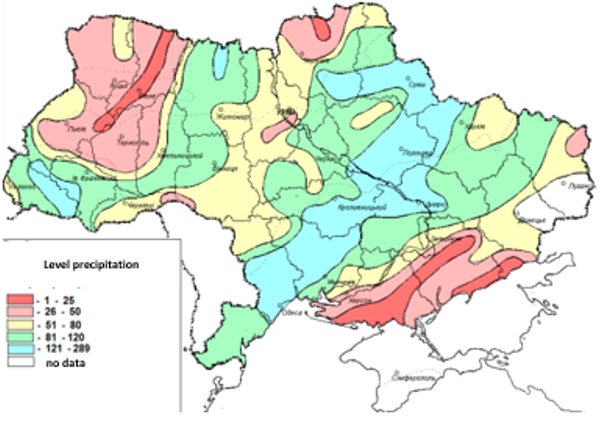In the third ten-day period, the weather was cool and in the middle of the period it was very cold for April. There was a large number of intense frosts, in some places precipitation in the form of snow and sleet, in some areas of the northern and central regions, temporary snow cover formed. The average regional ten-day air temperature in most of the country turned out to be 2.1-3.1 °C, in the Transcarpathian, Odesa, Kherson, Zaporizhzhya, Donetsk and Luhansk regions it was 1.5-2.0 °C below normal and amounted to from 6.8 °C in the north and west to 10.1 °C in the south and east of the country. The maximum air temperature on the warmest days increased to 19-24 °C. The minimum air temperature on the coldest nights dropped to minus 1-5 °C.
Precipitation of varying amounts and intensity was observed for 1-6 days throughout the country. In the Transcarpathian, Ivano-Frankivsk, Zhytomyr, Chernigiv, Sumy, Kharkiv and Cherkasy regions the amount of precipitation over a ten-day period was close to normal (14-19 mm), and in the Odesa, Mykolayiv, Dnipropetrovsk, Kirovohrad and Poltava regions it ranged from 123 to 140% ten-day rate (16 – 21 mm). The least amount of precipitation over the ten-day period fell in the Rivne, Volyn, Ternopil, Kherson and Zaporizhzhya regions, where their amount was 13-47% of the norm (2-7 mm). In the rest of the country, the total amount of precipitation over the ten-day period was 55-80% of the norm (11-15 mm).

During the ten-day period, agrometeorological conditions for the growing season of most agricultural crops developed satisfactorily. The moisture supply of agricultural crops in all soil layers was optimal and sufficient due to the low consumption of moisture, because the active development of plants due to the slow accumulation of heat was not observed. Sowings of spring crops were mainly in the phase of mass emergence. For winter crops, the conditions in which the formation of reproductive organs was long or began were quite favorable, although the plants lagged behind in phase development as compared with previous years. For the active development of all agricultural crops, there was not enough effective heat. In some areas, frost damage was noted on the leaves of winter wheat and spring barley.